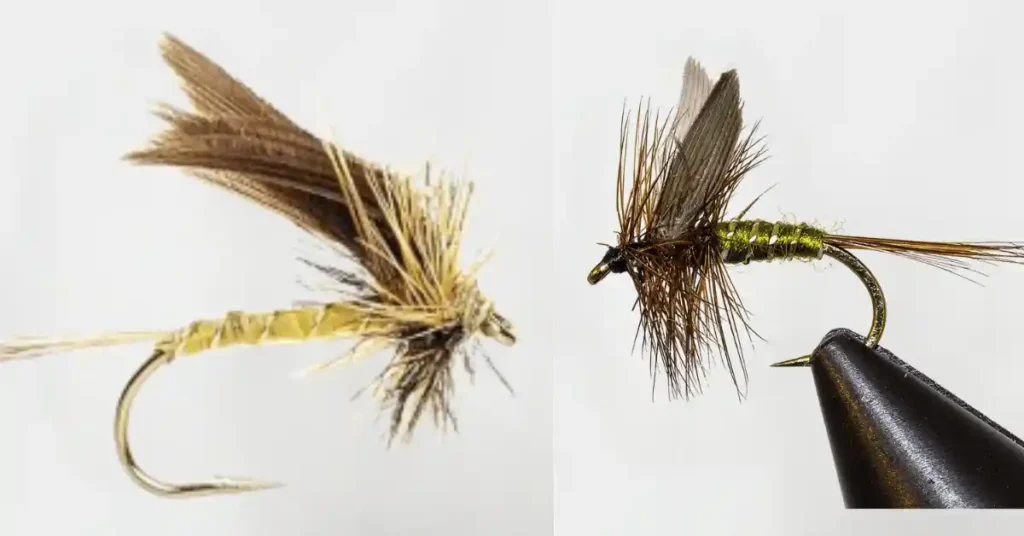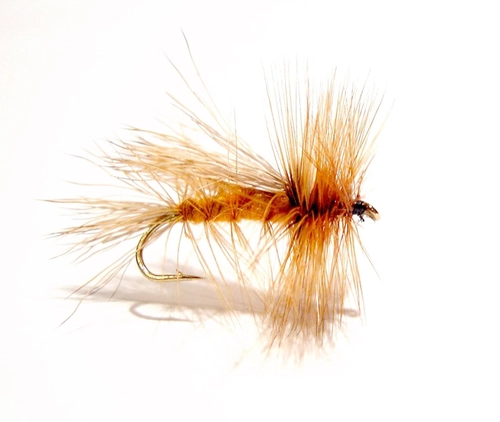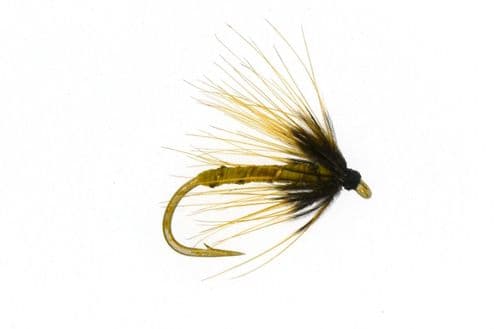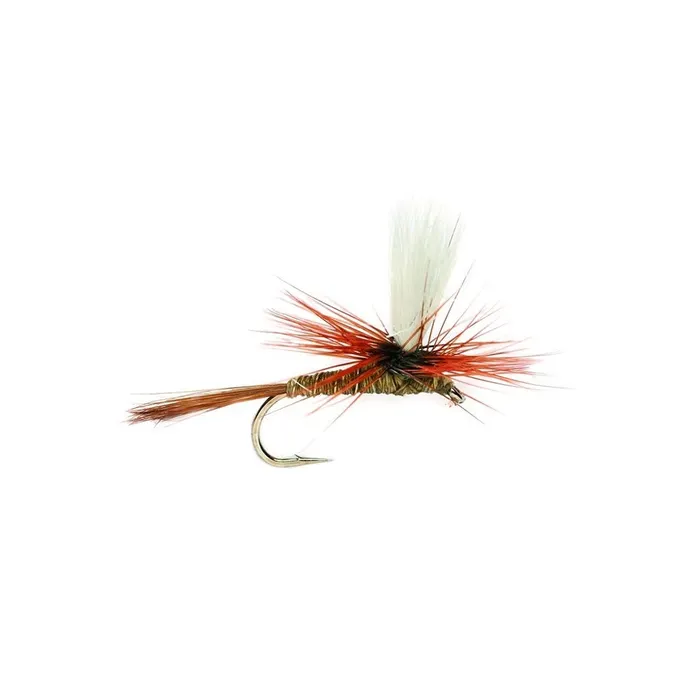Greenwells Glory: How to Tie 3 Remarkable Fly Patterns

For over 40 years, I’ve kept Greenwells Glory flies in my box because they’re great at tricking trout and grayling, whether they’re wet or dry.
So, when someone asks me what fly to use for imitating hatching olives, I always suggest tying on a Greenwell’s Glory.
It’s been around for ages and still works like a charm, mimicking the olives you find in rivers and stillwaters.
Originally made as a wet fly back in the 1800s, it’s now super famous among trout anglers in the US and UK. Now, let’s check out the patterns I use when tying them.
The Original Greenwells Glory Pattern
Throughout my journey of tying flies, the original Greenwells Glory has always been something special to me. Made in the 1800s by Canon William Greenwell, it still mesmerizes anglers like myself today.

The pattern stands out with its beautiful reddish-brown hackle, a slim body of yellow silk with gold wire ribbing, and a unique starling wing. Crafting it with care adds to its appeal.
What’s really impressive about this pattern is how versatile it is. Because of its delicate hackle and slender body, it can imitate various insects really well, which is why it’s still so popular.
This timeless classic, mixing beauty with usefulness, has definitely earned its spot in my collection of best tied flies.
How to Tie the Greenwells Glory Spider

For those new to fly tying, the Greenwells Glory spider pattern is a great place to start. Not only is it simple to tie, but the materials needed are cheap and easily obtained. To tie the Greenwells Glory spider, you will need the following materials:
To rig a rubber bobber stop:
- Hook: #12 to #16 HENDS BL354
- Thread: 8/0 Waxed Olive Uni-Thread
- Body: 8/0 Waxed Olive Uni-Thread
- Rib: Fine Gold Wire
- Hackle: Greenwell Hen feather
Let’s break down the steps for tying the Greenwells Glory spider:
- Step 1. Start by waxing the thread and attaching the fine gold wire. Then, wind the thread down the hook shank, stopping where the barb of the hook would be.
- Step 2. Next, wind the thread towards the eye of the hook and wrap the gold wire evenly to create the ribbed body. Secure the wire about 3 mm away from the eye by wrapping the thread around it.
- Step 3. Now, pick out a Greenwell hen hackle and remove any fluff and long fibers from the base of the feather.
- Step 4. Stroke the hackle fibers backward and tie the feather in by its tip, about 3mm from the eye of the hook, using the waxed olive thread.
- Step 5. Wind the hackle feather around the hook shank 2 or 3 times to create the hackle. Then, tie off the feather and use the thread to form a tidy head.
- Step 6. Finally, finish off by making a whip finish and applying varnish to the head for durability.
How to Tie the Greenwells Glory Wet Fly

The Greenwells Glory wet fly is another versatile pattern that has proven its worth on the water. Here are the materials you’ll need to tie the Greenwells Glory wet fly:
- Hook: #12 to #16 HENDS BL354
- Thread: 8/0 Waxed Olive Uni-Thread
- Body: 8/0 Waxed Olive Uni-Thread
- Rib: Fine Gold Wire
- Wing: Rolled starling wing feather
- Hackle: Greenwell Hen feather
Now, let’s go through the step-by-step process for tying the Greenwells Glory wet fly:
- Step 1. Begin by waxing the thread and securing the fine gold wire as described in steps 1 and 2 of the spider pattern.
- Step 2. Cut a section of a starling wing feather, approximately 8 mm wide, and fold it. Position the folded wing so that the tip slightly extends beyond the bend of the hook. Secure the other end of the wing with a few turns of the waxed tying thread.
- Step 3. Next, tie in a prepared Greenwell hen hackle by its tip. Wind the hackle feather around the hook shank with two turns to create the hackle. Then, tie off the hackle and use the thread to form a tidy head.
- Step 4. Finally, complete the fly by making a whip finish and applying varnish to the head for durability.
How to Tie the Greenwells Glory Parachute Dry Fly

Here are the materials needed for the Greenwells Glory parachute dry fly:
- Hook: #12 to #16 HENDS BL354
- Thread: 8/0 Waxed Olive Uni-Thread
- Body: 8/0 Waxed Olive Uni-Thread
- Rib: Fine Gold Wire
- Wing Post: White Veniard Polypropylene Floating Yarn
- Hackle: Medium Dun Genetic cock feather
If you prefer dry fly fishing, the Greenwells Glory parachute dry fly is a fantastic choice. It mimics a fly attempting to escape the water’s surface, making it irresistible to trout and grayling.
Let’s go through the step-by-step process for tying the Greenwells Glory parachute dry fly:
- Step 1. Start by waxing the thread and securing the fine gold wire, following steps 1 and 2 from the spider pattern.
- Step 2. Take a folded piece of polyethylene yarn and tie it onto the body of the fly, positioning it approximately 3 mm from the hook eye.
- Step 3. Now, tie in a medium dun genetic cock hackle at the base of the post, securing it up the post with the olive thread.
- Step 4. Form the hackle by winding the feather down the wing post, and then secure it at the base of the post with the waxed thread. Create a tidy head with the thread.
- Step 5. Finally, finish off the fly by making a whip finish, applying varnish to the head for durability, and cutting the post to the desired length.
Fly fishing tips and tricks for Greenwells Glory spider and wet fly
When I hit the waters with my Greenwells Glory Spider and Wet fly, there are a few things I keep in mind to maximize my success. I’ve found that the Spider variant is excellent for fish feeding on the surface.
I typically cast it into the current and let it drift naturally, giving the illusion of a helpless insect trapped in the water’s film.
My trick here is to use a lighter tippet, which helps the fly maintain a natural, low-riding position.
Now, for the Wet fly variant, the game changes slightly. This pattern is my go-to when I sense the fish are feeding deeper.
I generally cast upstream and let the fly sink, allowing the current to carry it down and across. To give it that extra enticing movement, I sometimes impart a slight twitch to my rod tip, imitating a struggling insect.
Believe me, this little trick can often make the difference between a bite and a pass. Remember, the key here is patience and keen observation. Happy fishing!
Fly fishing tips for Greenwells Parachute Dry fly
Fishing with the Greenwells Glory Parachute Dry Fly requires a certain level of keen observation and precision. I can’t stress enough the importance of timing when using this pattern.
As I watch the water’s surface, I am constantly looking for signs of rising fish. If I spot fish actively feeding on the surface, that’s my cue to deploy the Greenwells Glory Dry Fly.
Now, casting this fly requires some finesse. Since it’s designed to float high and remain upright on the water’s surface, you want to aim for a gentle landing.
A heavy splashdown can scare off the very fish you’re trying to entice. Practice casting so that your fly lands as naturally as possible – the more it looks like a real insect alighting on the water, the better.
Matching the hatch is another essential trick I’ve learnt over the years. Pay close attention to the insects that are currently buzzing around and on the water.
Your Greenwells Glory Dry Fly should mimic these bugs to attract the fish. If it’s a mayfly hatch, you can bet the fish are looking for mayflies.
By presenting a fly that closely resembles what they’re already feeding on, you increase your chances of a successful catch.
Remember, when it comes to fly fishing, patience is key. It might take a few casts to find the right rhythm and the perfect spot.
But when you do, and you see that fish rise to take your Greenwells Glory Dry Fly – trust me, it’s a moment of pure magic that’s worth the wait.
My Favorite Greenwells Glory
I use many greenwells glory flies. the following are some of my favorites:
- Large Dark Olive,
- Spurwings,
- Olive Upright,
- Blue-Winged Olives,
- Medium Olives,
- Pale Water Dun etc.
Final Words
In my fly fishing journey, i’ve tried lots of fly patterns, but Greenwells Glory isone of my favorites.
It’s always been special to me because it works so well and looks great. Whether you’re new to fly fishing or a pro, you should give it a try.
There are different types of Greenwells Glory, like the Original and the Spider. They all have their own charm. I bet you’ll like using Greenwells Glory as much as I do. So, go ahead and add it to your collection.
You’ll have fun tying and fishing with it, I promise!

Meet Ibrahim Khan, an avid angler and author in Fishing Teach. He shares his wealth of knowledge from his 16 years of experiences in fishing. His articles are a captivating blend of practical insights and thrilling tales that invite readers into the enchanting world of fishing.
Ibrahim’s guides are your go-to guide in the realm of fishing on this informational site. Hailing from a coastal paradise, Ibrahim’s passion for angling is the heartbeat of his life.
